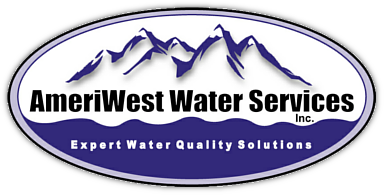In general terms they control iron and manganese staining and scale deposition, soften and remove scale and tuburculation, and control corrosion.
Sequestering:
Phosphates are often referred to as chelating or sequestering chemicals. A sequestering agent is a compound that will form a water soluble, stable metal complex without precipitation. Iron, manganese, calcium and magnesium form stoichiometric (mole to mole) relationships with the sequestrant. If the number of moles of calcium doubles, the molar amount of sequestrant required for optimum binding also doubles.
Threshold Agent:
A threshold agent is a compound that prevents the crystallization or precipitation of a normally insoluble metal like calcium or iron at levels far below that which is required in mole to mole reactions. For example, hardness at 200 mg/L as calcium carbonate would theoretically require 500-mg/L sodiumhexametaphosphate (SHMP) to sequester the calcium.
However, typically only 2 to 4 mg/L of SHMP is used to inhibit scale formation. This “threshold effect” of SHMP is not fully understood, but it may occur by interfering with early crystal growth. Most condensed phosphates can act as both sequestering agents and as threshold agents.
Dispersion and Deflocculating:
In the absence of phosphates, small particles of iron or calcium tend to attract one another due to areas of both positive and negative charges on each particle. The clumps deposit out of solution onto the surface of pipes in a process called flocculation. Threshold levels of poly phosphates coat the small particles and reduce their attraction for each other, resulting in little or no settling. This property is also key in removing (deflocculating) existing mineral oxides from pipes.
Corrosion Inhibition:
In the late 1920’s, Dr Ralph Hall rediscovered a 100 year old report describing the use of phosphate in water treatment. He developed the first meaningful application of phosphate use in boiler feed water to precipitate and control calcium. In 1940 to 55, researchers from Calgon and MIT established the effectiveness of a 2-mg/L feed of SHMP for corrosion and scale control in municipal systems. It was shown to react with iron and calcium to form positively charged particles in the vicinity of the anodes on the pipe surface. These very small particles are then deposited on cathodic areas by a process called electro deposition. This film decreases the rate of corrosion on the pipe surface. Researchers used radioactive phosphorous in tracer tests to show the presence and amount of electrodeposited film. Once phosphate treatment stops, corrosion inhibition decreases. This suggests there is a mobile equilibrium between phosphate on the surface and in solution. Copper corrosion was thought to not improve with either orthophosphate or polyphosphate, however, long-term treatment with blended phosphates has shown that a combination of blended ortho and polyphosphates can dramatically reduce the rate of general corrosion of copper. The synergistic effect of these combinations is shown to work but has not been fully explained.
